Discover Samaria Gorge Crete: A Must-Visit Destination
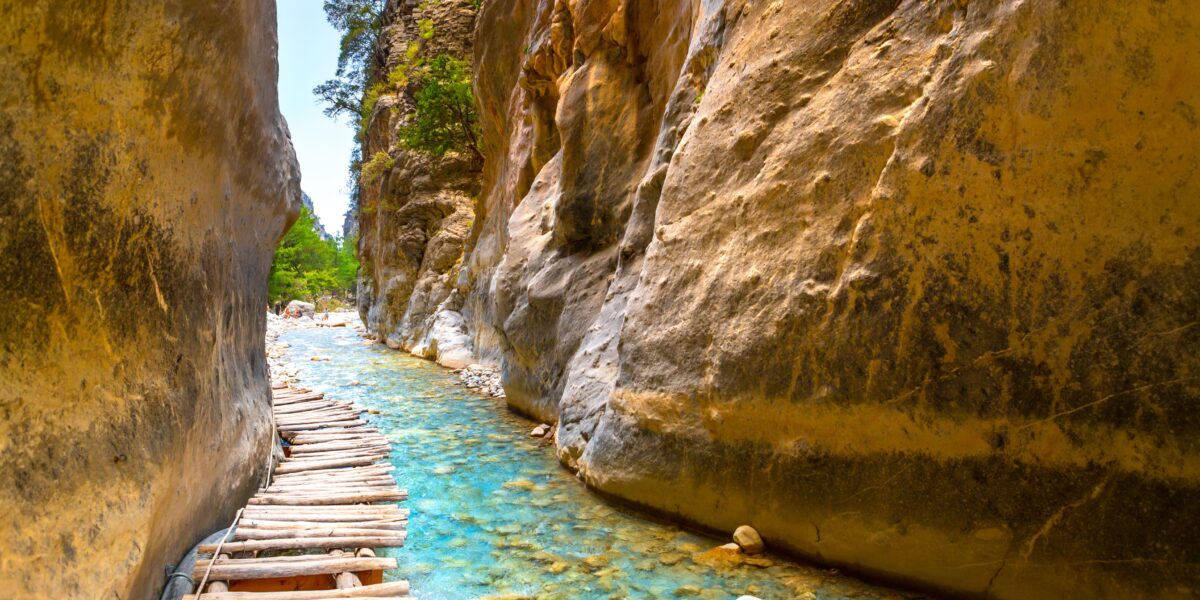
Nestled in the heart of the White Mountains in West Crete, Samaria Gorge in Crete is a natural wonder that attracts visitors from all over the world.
This magnificent gorge, declared a national park in 1962, is a haven for nature enthusiasts and adventure seekers. With its stunning landscapes, unique flora and fauna, and challenging trekking trails, Samaria Gorge, located in the Samaria National Park, offers an unforgettable experience for those who dare to explore its depths.
Stretching for 16 km, Samaria Gorge is known as the longest gorge in Europe. It starts at Xyloskalo, a steep stone pathway on the northern side of the Omalos Plateau, and ends at the picturesque village of Agia Roumeli on the shores of the Libyan Sea. Along the way, hikers are treated to breathtaking scenery, diverse wildlife, and ancient landmarks that tell the story of the region’s rich history. However, it is important to note that while Samaria Gorge may be the longest in Europe, the „gorges du Verdon“ in South France are actually longer, spanning over 20 km.
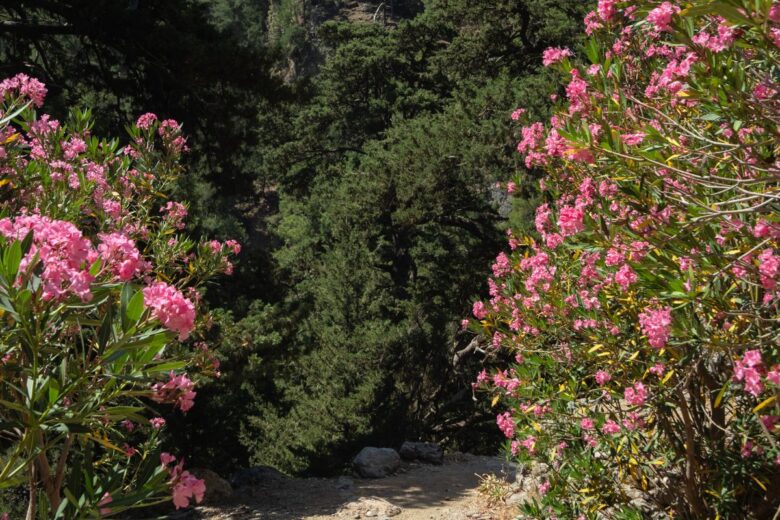
Why Samaria Gorge Should Be on Your Travel List
Samaria Gorge is a must-visit destination for anyone seeking natural beauty and adventure. The gorge offers a unique opportunity to immerse yourself in the stunning landscapes of West Crete and explore the heart of the gorge.
One of the main reasons to visit Samaria Gorge is its natural beauty. The towering cliffs, crystal-clear streams, and lush vegetation create a picturesque backdrop for an unforgettable trekking experience. The rugged terrain and challenging trails make it a paradise for hikers and nature lovers.
The region is also home to a unique fauna and flora. With over 300 species of flora and 900 species of fauna, including 70 endemic to Crete, Samaria Gorge is a biodiversity hotspot. Visitors can spot rare and endangered species, such as the kri-kri, a Cretan wild goat that lives only in Samaria and the Thodorou islet. The diverse ecosystem of the gorge provides a habitat for a wide range of plants and animals, making it a paradise for nature enthusiasts.
Trekking through Samaria Gorge offers a once-in-a-lifetime experience. The challenging trails, rocky paths, and steep descents test the endurance and skill of hikers. Along the way, hikers are rewarded with stunning views, ancient landmarks, and the sense of accomplishment that comes from conquering one of Europe’s longest gorges. Whether you are an experienced hiker or a beginner, Samaria Gorge offers a trekking experience that will leave you with memories to last a lifetime.
The Natural Beauty of Samaria Gorge
The natural beauty of Samaria Gorge is truly awe-inspiring. Situated in the majestic White Mountains, the gorge offers breathtaking views of towering cliffs, deep gorges, and lush vegetation. The rugged terrain and diverse landscapes make it a paradise for nature lovers and outdoor enthusiasts.
As a national park, Samaria Gorge is carefully maintained to preserve its natural beauty. The park offers well-maintained trails, rest areas, and facilities to ensure a safe and enjoyable experience for visitors. Whether you are exploring the narrow passages of the gorge or admiring the panoramic views from the Iron Gates, you will be surrounded by the pristine beauty of this unique natural wonder and the inhabitants that once called this place home.
Unique Fauna and Flora of the Region
Samaria Gorge is home to a diverse range of flora and fauna, making it a haven for biodiversity. With over 300 species of flora and 900 species of fauna, including 70 endemic to Crete, the gorge is a paradise for nature enthusiasts.
The unique flora of the region includes rare and endangered plants that have adapted to the rugged terrain and harsh climate of the White Mountains. Visitors can spot colorful wildflowers, aromatic herbs, and ancient trees as they trek through the gorge.
The fauna of Samaria Gorge is equally diverse, with a wide range of animal species calling the region home. From the iconic kri-kri, a Cretan wild goat, to the elusive golden eagles, the gorge is a sanctuary for wildlife. Exploring the trails of Samaria Gorge offers a chance to encounter these unique and beautiful creatures in their natural habitat.
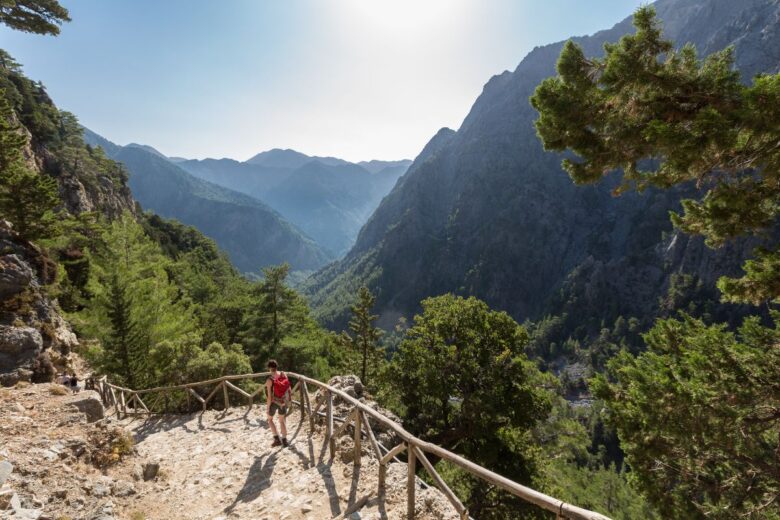
Is Samaria Gorge Suitable for Beginner Hikers?
Yes, Samaria Gorge is suitable for beginner hikers. However, it is important to be prepared for the challenging terrain, steep descents, and long distance. It is advisable to have a good level of fitness and wear appropriate footwear.
What Are the Must-See Highlights in Samaria Gorge?
Some of the must-see highlights in Samaria Gorge include the iconic Iron Gates, the deserted village of Samaria, an ancient church, and the majestic White Mountains. These landmarks offer stunning views and a glimpse into the rich history of the region.
Preparing for Your Trek: A Beginner’s Guide
Embarking on a trek through Samaria Gorge requires essential gear and an understanding of the terrain and weather conditions. Ensure you have sturdy hiking boots, water, and snacks for the journey. The weather in this region can vary, so be prepared for sudden changes. Familiarize yourself with the terrain, including the heart of the gorge and the deserted village of Samaria. Packing toilet paper in biodegradable bags is crucial due to the lack of rubbish bins along the trail. As a beginner, it’s advisable to seek advice from wardens and use radio contact if needed. Understanding safety reasons and respecting the natural beauty of this national park is key to a successful trek.
Essential Gear and Resources for the Trek
Proper equipment is crucial for your Samaria Gorge trek. Ensure sturdy hiking boots for the rugged terrain and pack light but nutritious snacks for energy. Don’t forget a refillable water bottle to stay hydrated along the trail. A hat and sunscreen are essential at the start of the hike under the sun’s intense Crete. Pack a small first aid kit for emergencies like blisters or minor cuts. Considering unpredictable weather, a lightweight rain jacket is advisable. Additionally, a small backpack for essentials and a mobile phone for communication are recommended for safety and convenience during your hike.
Understanding the Terrain and Weather Conditions
Traversing Samaria Gorge demands a grasp of its diverse terrain and weather fluctuations. The hike commences at an altitude of 1,230 meters in Omalos on the Lefka Ori mountain range, leading to the shores of the Libyan Sea in Agia Roumeli. The descent spans 16 kilometers through rocky paths and the rugged terrain of the White Mountains, covering a distance of 10 miles. Be prepared for variable weather conditions; while the gorge offers a cool respite in summer, occasional rain in October can make the trail slippery. Quick changes from sunny spells to sudden downpours are common, necessitating proper gear and caution. Understanding these dynamics ensures a safe and pleasant trek through this natural wonder of Crete.
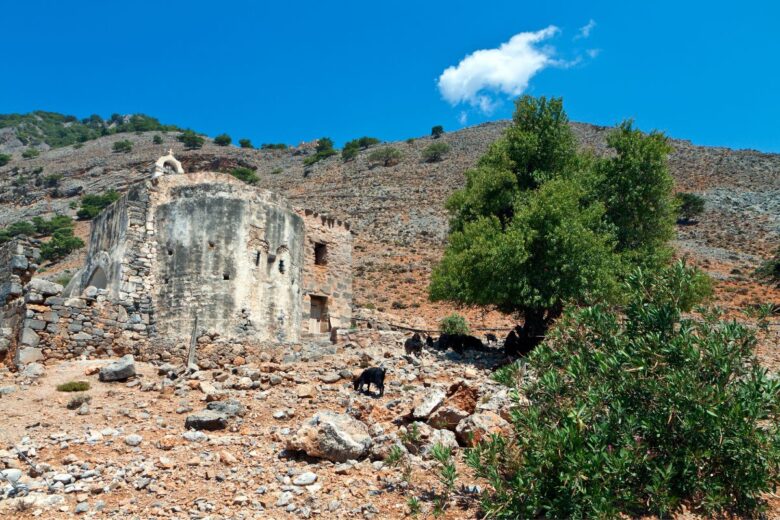
Step-by-Step Guide to Exploring Samaria Gorge
Exploring Samaria Gorge is a memorable experience that can be divided into several steps. Here is a step-by-step guide to help you navigate the gorge.
- Step 1: Arrival and Entry Points: The hike begins at Xyloskalo, located on the northern side of the Omalos Plateau. You can reach Xyloskalo by public bus from Chania or by private car. Another entry point is Chora Sfakion, where you can take a ferry to Agia Roumeli and start the hike from there.
- Step 2: Navigating the Main Trail and Its Challenges: The main trail of Samaria Gorge takes you through stunning landscapes, including pine forests, cypresses, and streams. Be prepared for rocky paths, steep descents, and narrow passages, especially at the Iron Gates.
- Step 3: Key Sights and Photo Spots Along the Way: The gorge is dotted with landmarks and photo spots that are worth exploring. Some of the key sights include the abandoned village of Samaria, an ancient church, and the iconic Iron Gates.
- Step 4: Reaching the End and What to Do Next: The hike ends in the village of Agia Roumeli, where you can relax and take in the beauty of the Libyan Sea. From Agia Roumeli, you can take a ferry back to Chora Sfakion or explore the village before heading back.
Step 1: Arrival and Entry Points
To start your trek through Samaria Gorge, you have two main entry points: Xyloskalo in Omalos and Chora Sfakion. Xyloskalo is the most popular entry point and can be reached by public bus or private car.
If you choose to start at Xyloskalo, you can take a public bus from Chania to Omalos. The bus journey takes approximately one hour and offers scenic views of the surrounding countryside. Alternatively, you can drive to Omalos and park your car at the designated parking area.
Chora Sfakion is another entry point for Samaria Gorge. You can take a ferry from Chora Sfakion to Agia Roumeli and start the hike from there. The ferry journey takes approximately one hour and offers breathtaking views of the coastline.
Step 2: Navigating the Main Trail and Its Challenges
The main trail of Samaria Gorge is marked with signage and offers a challenging yet rewarding trekking experience. As you navigate the trail, you will encounter various challenges and landmarks.
One of the highlights of the trail is the Iron Gates, where the cliffs tower 500 meters above sea level. This narrow passage offers breathtaking views and is a testament to the grandeur of the gorge.
The trail itself consists of rocky paths, steep descents, and narrow passages. It is important to wear appropriate footwear and be prepared for the rugged terrain. The trail is well-marked with signage, making it easy to follow and navigate.
Step 3: Key Sights and Photo Spots Along the Way
As you traverse through the majestic Samaria Gorge, be sure to capture some key sights and photo spots along the way. From the deserted village of Samaria to the ruins of a hilltop castle accessible by a side-trail, every corner beckons exploration. Don’t miss the quaint village of Agia Roumeli nestled at the end of the hike, offering a serene retreat. The rugged terrain and unique flora of the region provide ideal settings for striking photography. Be enchanted by ancient churches hidden amidst the white mountains and the imposing Iron Gates marking the heart of the gorge. Each kilometer unfolds new vistas, making every step a photo-worthy moment.
Step 4: Reaching the End and What to Do Next
After completing your trek through Samaria Gorge, you will reach the village of Agia Roumeli, located on the shores of the Libyan Sea. Agia Roumeli offers a tranquil and picturesque setting to relax and unwind.
In Agia Roumeli, you can enjoy a well-deserved rest and take in the beauty of the sea. There are several cafes and restaurants where you can savor local cuisine and refreshing drinks. Don’t forget to try the famous freshly squeezed orange juice, a favorite among visitors.
To return to Chora Sfakion or other destinations, you can take a ferry from Agia Roumeli. It is advisable to purchase a ferry ticket in advance to secure your seat. The ferry journey offers stunning views of the coastline and is a relaxing way to end your Samaria Gorge adventure.
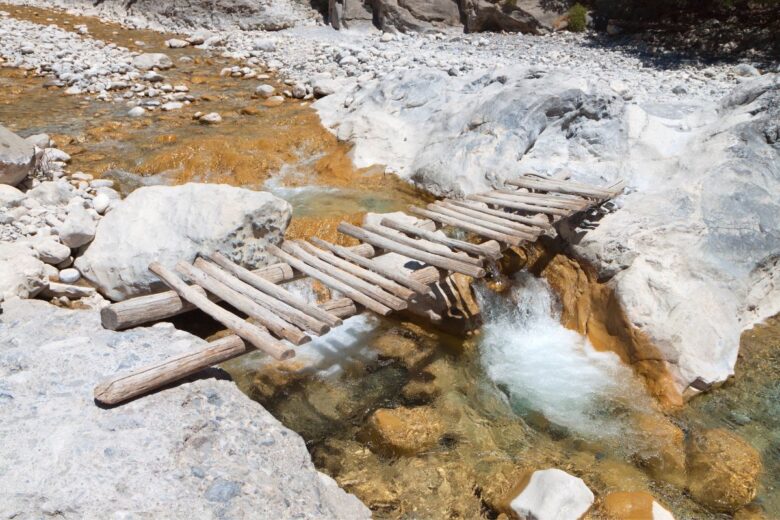
Ensuring Safety and Preservation During Your Visit
To ensure a safe and environmentally conscious visit to Samaria Gorge Crete, adhere to Leave No Trace principles by carrying out all waste, including toilet paper. Familiarize yourself with emergency procedures and carry essentials like a radio for contact. In case of emergency, contact the park wardens promptly. To preserve the natural beauty, refrain from littering by using designated rubbish bins or taking waste with you. Stay cautious during rainy days as the terrain can become slippery. Additionally, for your safety, always hike with a companion or in groups. By following these guidelines, you can enjoy the stunning Samaria Gorge responsibly while ensuring its preservation.
Leave No Trace Principles for Hikers
Respecting the environment in Samaria Gorge is paramount. Implement „Leave No Trace“ principles during your trek. Carry out all trash, even biodegradables. The stunning beauty of the gorge should be preserved. Refrain from picking plants or disturbing wildlife; let nature thrive undisturbed. Be mindful of all signs and stay on designated trails to protect the ecosystem. Plan ahead and prepare, minimizing your impact throughout the hike. These principles ensure future generations can also revel in the natural splendor of Samaria Gorge. Stay vigilant in adhering to these guidelines to safeguard this precious environment.
Emergency Situations: How to Be Prepared
In the rugged terrain of Samaria Gorge Crete, it’s crucial to be prepared for any emergency. Before starting your trek, ensure you have essential items like a first aid kit, extra food, and a flashlight. Familiarize yourself with the route and establish communication protocols in case of separation. Be aware of the limited mobile reception and consider bringing a whistle for signaling purposes. In case of injury, stay calm and seek help from park wardens or fellow hikers. Always adhere to safety guidelines and respect the natural environment to minimize risks. Being proactive and equipped can make a significant difference in handling unforeseen situations while exploring this magnificent landscape.
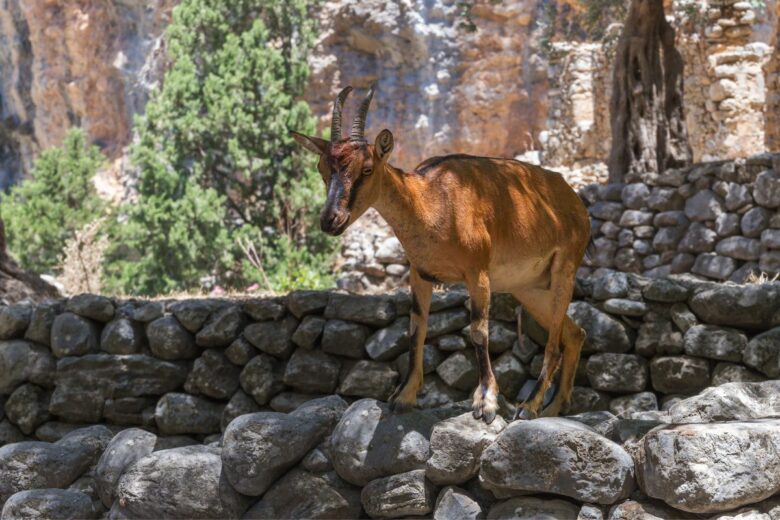
Best Times and Seasons to Visit
For the optimal experience at Samaria Gorge Crete, plan your visit between late May and early October. During this period, the weather conditions are usually favorable, offering pleasant trekking temperatures and minimal chances of rain. To avoid the peak season crowds, consider visiting in late May or late September when the trail is less crowded, allowing you to immerse yourself in the stunning surroundings peacefully. The shoulder seasons provide a balance between good weather and fewer hikers, enhancing the sense of solitude and serenity, which are essential for fully appreciating the beauty of the gorge. Additionally, the park opens daily at daylight, making it easy to plan your visit and enjoy the best times and seasons to experience the Samaria Gorge.
Weather Patterns and Their Impact on the Trail
The weather in Samaria Gorge can vary greatly depending on the time of year. Understanding the weather patterns is essential for planning your trek and ensuring a safe and enjoyable experience.
In early May, the weather is generally cool and pleasant, making it an ideal time to visit. The flora is in full bloom, and the trails are less crowded. Late October also offers mild temperatures and fewer crowds, making it another favorable time to explore the gorge.
However, it is important to be aware of the weather conditions before starting your trek. Rainy days can make the trails slippery and dangerous, and the gorge may be closed for safety reasons. It is advisable to check the weather forecast and be prepared for changing conditions.
Avoiding the Crowds: Timing Your Trek Right
Samaria Gorge can get crowded, especially during the peak season. To avoid the crowds and enjoy a more peaceful trek, it is important to time your visit right.
One of the best ways to avoid the crowds is to start your trek early in the morning. By starting early, you can beat the tourist buses and have the trail to yourself for a while. Early morning offers cooler temperatures and stunning views of the sunrise.
Another option is to start your trek in the late afternoon. Most visitors start their trek in the morning and finish by mid-afternoon, leaving the trail less crowded in the late afternoon. This allows you to enjoy a quieter and more serene experience in the gorge.
Samaria Gorge in Crete is a nature lover’s paradise, offering breathtaking landscapes and unique flora and fauna. Whether you’re a beginner hiker or an experienced trekker, the gorge provides an unforgettable experience. Remember to pack essential gear, understand the terrain, and follow leave-no-trace principles to preserve its beauty. Timing your visit right ensures a more peaceful exploration of this natural wonder. From arrival to departure, immerse yourself in the beauty and serenity of Samaria Gorge, making it a must-visit destination for your travel list.
